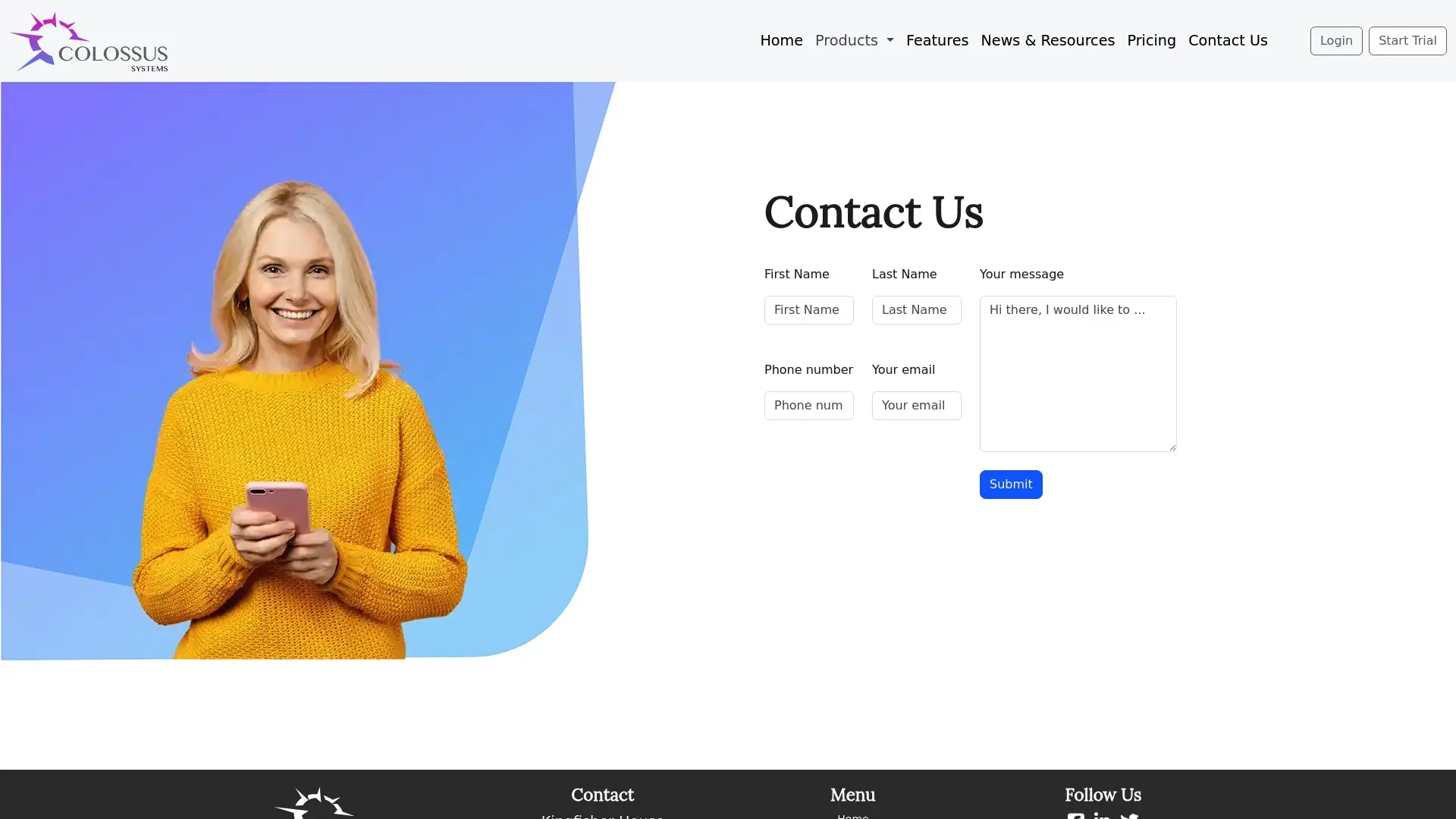Data Analytics: Everything You Need to Know

Nearly 91 percent of companies believe data analytics shapes strategic business choices, yet many still misunderstand what it truly means. Businesses often see analytics as just number crunching, missing its deeper value. Real power comes from combining advanced technology with human insight. By breaking down misconceptions, readers can uncover how analytics turns raw information into clear direction and drives smarter decisions.
Table of Contents
- Defining Data Analytics And Common Misconceptions
- Key Types Of Data Analytics Used Today
- How Data Analytics Powers Decision-Making
- Real-World Applications In Membership Organizations
- Benefits, Limitations, And Key Risks To Consider
Key Takeaways
| Point | Details |
|---|---|
| Comprehensive Understanding | Data analytics transforms raw data into strategic insights through a blend of advanced techniques and human expertise. |
| Types of Analytics | The four key methodologies—descriptive, diagnostic, predictive, and prescriptive—each serve unique purposes in deriving insights from data. |
| Data-Driven Decision-Making | Organizations must leverage data analytics for informed decision-making to remain competitive in today’s market. |
| Risk Management | Effective data governance and privacy protocols are essential to mitigate risks associated with data processing and compliance. |
Defining Data Analytics and Common Misconceptions
Data analytics represents a sophisticated approach to understanding complex information landscapes by transforming raw data into meaningful strategic insights. As research from arxiv indicates, data analytics involves far more than simply processing large datasets - it encompasses a nuanced understanding of data quality, contextual interpretation, and strategic application of analytical methods.
Contrary to popular belief, data analytics is not exclusively about handling massive volumes of information. It’s a multifaceted discipline that requires deep analytical thinking, contextual understanding, and strategic interpretation. Machine learning and natural language processing have expanded the capabilities of data analysis, making sophisticated insights more accessible to professionals across various disciplines.
One prevalent misconception is that data analytics can be fully automated or replace human expertise. en.wikipedia.org emphasizes that augmented analytics tools are designed to enhance human decision-making, not substitute it entirely. These technologies excel at:
- Automating routine analytical tasks
- Providing deeper contextual insights
- Reducing manual data processing time
- Identifying complex patterns humans might overlook
Effective data analytics requires a strategic blend of technological tools and human interpretation. While advanced algorithms can process information rapidly, human analysts bring critical thinking, domain expertise, and nuanced understanding that transform raw data into actionable strategic recommendations. The most powerful data analytics approaches integrate technological capabilities with human intelligence, creating a synergistic relationship that drives meaningful organizational insights.
Key Types of Data Analytics Used Today
Data analytics encompasses several sophisticated approaches for extracting meaningful insights from complex datasets. According to Ironhack, the primary types of data analytics can be categorized into four distinct yet interconnected methodologies: descriptive, diagnostic, predictive, and prescriptive analytics.
Here’s a comparison of the four primary types of data analytics:
![]()
| Type | Main Purpose | Key Techniques | Typical Outcomes |
|---|---|---|---|
| Descriptive Analytics | Summarise past events | Data aggregation Reporting |
Trend identification |
| Diagnostic Analytics | Reveal causes behind results | Data drilling Correlation analysis |
Root cause determination |
| Predictive Analytics | Forecast future scenarios | Statistical modelling Machine learning |
Trend and risk prediction |
| Prescriptive Analytics | Recommend specific actions | Optimisation algorithms Simulation |
Actionable recommendations |
Descriptive analytics serves as the foundation, focusing on interpreting historical data to identify past trends and patterns. This approach helps organizations understand what has already occurred by aggregating and summarizing complex datasets. In contrast, diagnostic analytics delves deeper, examining the underlying causes behind specific outcomes or trends, allowing businesses to comprehend the “why” behind their historical performance.
Predictive analytics represents a more advanced technique, using statistical models and machine learning algorithms to forecast potential future events based on existing patterns. These sophisticated models can anticipate market shifts, customer behaviors, and potential risks with remarkable accuracy. Prescriptive analytics takes this a step further by not just predicting potential scenarios but also recommending specific actions to achieve desired outcomes.
A specialized subset of data analytics worth highlighting is IT operations analytics (ITOA). As Wikipedia explains, ITOA applies big data techniques specifically to IT infrastructure, helping organizations:
- Discover complex patterns in system performance
- Monitor real-time IT infrastructure health
- Predict potential system failures
- Optimize technological resources
- Enhance overall operational efficiency
These varied analytical approaches demonstrate that modern data analytics is far more than simple number-crunching. By combining technological sophistication with strategic thinking, organizations can transform raw data into powerful, actionable insights that drive meaningful business decisions and innovation.

How Data Analytics Powers Decision-Making
In the modern business landscape, data-driven decision-making has transformed from a competitive advantage to an operational necessity. According to arxiv, data analytics enhances organizational decision-making by providing actionable insights derived from sophisticated data analysis, enabling leaders to make informed strategic choices based on empirical evidence rather than intuition.
Data exploration plays a crucial role in this process, serving as the foundational mechanism for understanding complex information landscapes. As Wikipedia explains, this involves comprehensive visual and statistical analysis to uncover hidden patterns, anomalies, and relationships within datasets. By systematically examining data characteristics, organizations can identify nuanced insights that might otherwise remain obscured by surface-level information.
The decision-making process powered by data analytics typically follows a strategic progression:
- Gathering relevant and high-quality data
- Cleaning and preprocessing information
- Applying appropriate analytical techniques
- Interpreting results in organizational context
- Translating insights into actionable strategies
Modern data analytics transcends mere number-crunching. It represents a sophisticated approach to understanding organizational dynamics, customer behaviors, market trends, and potential risks. By integrating advanced technologies like machine learning, artificial intelligence, and statistical modeling, businesses can transform raw data into strategic intelligence that drives innovation, optimizes operations, and creates competitive differentiation. The true power of data analytics lies not just in collecting information, but in converting complex datasets into clear, implementable strategic recommendations.
Real-World Applications in Membership Organizations
Data analytics has become a transformative tool for membership organizations, offering unprecedented insights into member behaviors, preferences, and engagement patterns. According to Ironhack, organizations can leverage predictive analytics to forecast membership trends, enabling strategic planning and more targeted resource allocation. This approach allows associations to anticipate membership fluctuations and develop proactive retention strategies.
One of the most powerful applications of data analytics is personalized member engagement. By analyzing participation data, membership organizations can create tailored communication strategies that resonate with specific member segments. This might involve identifying members who are at risk of disengagement, understanding the most effective communication channels, and developing targeted content that addresses individual professional development needs.
Technical infrastructure also benefits significantly from data-driven approaches. As Wikipedia explains, IT operations analytics can help membership organizations monitor and optimize their technological ecosystems, ensuring seamless member experiences. Key applications include:
- Proactively detecting potential system performance issues
- Minimizing service interruptions
- Optimizing digital member interaction platforms
- Reducing technological downtime
- Enhancing overall digital member experience
Membership organizations can further utilize data analytics to:
- Track member recruitment effectiveness
- Measure event participation rates
- Analyze professional networking interactions
- Identify emerging member interests
- Develop targeted professional development programs
For those looking to dive deeper into membership management strategies, our membership management guide offers comprehensive insights into leveraging technological solutions for organizational growth. The key is transforming raw data into meaningful, actionable strategies that drive member satisfaction and organizational success.
Benefits, Limitations, and Key Risks to Consider
Data analytics offers tremendous potential for organizational transformation, but understanding its comprehensive landscape requires a nuanced perspective. According to arxiv, the benefits include improved decision-making, enhanced operational efficiency, and the critical ability to identify new opportunities that might otherwise remain hidden within complex datasets.
However, the implementation of data analytics is not without significant challenges. Skilled personnel remain a crucial requirement, as does ensuring high-quality data inputs and seamless technological integration. Organizations must invest in both technological infrastructure and human expertise to truly leverage analytics effectively. The complexity of integrating advanced analytical systems into existing organizational frameworks can represent a substantial operational hurdle.
Privacy and data governance emerge as critical considerations in the modern analytics landscape. As Wikipedia highlights, the mosaic effect presents a significant risk, where combining multiple data sources can inadvertently expose sensitive information. Key risks organizations must carefully manage include:
- Potential unauthorized data disclosure
- Unintentional personal information leakage
- Compliance violations with data protection regulations
- Reputational damage from data mismanagement
- Potential legal and financial penalties
Mitigating these risks requires a comprehensive approach:
- Implementing robust data governance frameworks
- Establishing clear privacy protection protocols
- Conducting regular security audits
- Training staff on data handling best practices
- Utilizing advanced anonymization techniques
For membership organizations seeking to navigate these complex considerations, our membership software guide provides deeper insights into managing technological risks while maximizing analytical potential. The key is approaching data analytics as a strategic capability requiring continuous learning, adaptation, and responsible implementation.
Unlock the True Power of Data Analytics for Your Membership Organisation
Understanding complex data and transforming it into actionable insights is challenging. Many membership organisations struggle to integrate advanced analytics with personalised member engagement while safeguarding sensitive information. This article highlighted key concepts like predictive and prescriptive analytics as well as IT operations analytics, underscoring the need for a strategic blend of technology and human expertise.
At Colossus Systems, we provide a unified SaaS platform designed to streamline exactly these challenges. Our tools empower you to customise your member management, event planning, and communications all while leveraging advanced analytics to predict trends and improve member retention. You can gain critical insights without compromising data privacy or operational efficiency.
Elevate your decision-making process today by discovering how our solutions can convert complex data into meaningful strategies. Begin your journey toward smarter organisational growth and seamless member engagement.
Discover more about effective membership management in our membership management guide.

Take the next step to transform your membership organisation with Colossus Systems. Contact our team now to learn how our platform integrates advanced analytics and customisable solutions to enhance your strategic capabilities. Visit Contact Us and start turning insights into impactful actions.
Frequently Asked Questions
What is data analytics?
Data analytics is the process of examining raw data to uncover insights and inform strategic decisions. It involves transforming complex information into meaningful insights through various methodologies.
What are the main types of data analytics?
The primary types of data analytics are descriptive, diagnostic, predictive, and prescriptive analytics, each serving different purposes from summarizing historical data to recommending specific actions for future scenarios.
How does data analytics enhance decision-making in organizations?
Data analytics enhances decision-making by providing actionable insights derived from data analysis, enabling organizations to base their strategic choices on empirical evidence rather than intuition.
What are the risks associated with implementing data analytics?
Key risks include unauthorized data disclosure, compliance violations with data protection regulations, and reputational damage. Organizations must implement robust data governance and privacy protection protocols to mitigate these risks.